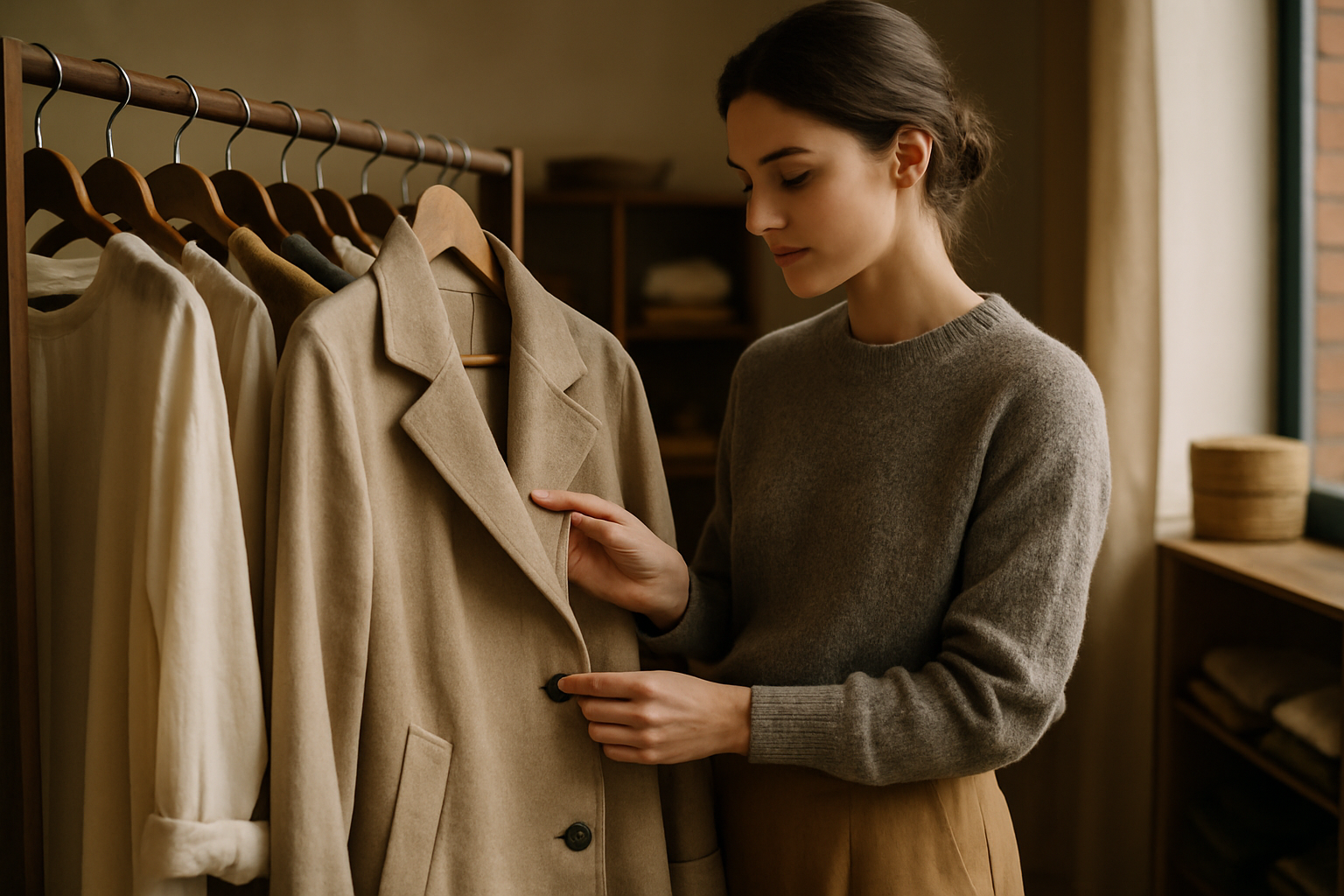The Allure of Slow Fashion: Embracing Timeless Style
A gentle revolution is sweeping through the fashion world, challenging the breakneck pace of trends and disposable clothing. Slow fashion, a movement that champions quality, longevity, and mindful consumption, is gaining traction among style-savvy individuals. This approach to dressing isn't just a trend; it's a philosophy that's reshaping our relationship with clothing and redefining what it means to be fashionable in today's fast-paced world.

The term “slow fashion” was coined in 2007 by Kate Fletcher, a British design activist and author. Fletcher drew inspiration from the slow food movement, which emphasizes traditional cooking methods and locally sourced ingredients. Similarly, slow fashion advocates for a more thoughtful approach to clothing production and consumption.
The Pillars of Slow Fashion
At its core, slow fashion is built on several key principles that set it apart from mainstream fashion practices:
- Quality and Longevity: Slow fashion emphasizes well-made garments that stand the test of time, both in terms of durability and style.
- Ethical Production: This movement prioritizes fair labor practices and transparent supply chains.
- Environmental Consciousness: Slow fashion brands often use eco-friendly materials and production methods to minimize their environmental impact.
- Timeless Design: Rather than chasing fleeting trends, slow fashion focuses on classic, versatile pieces that remain stylish year after year.
- Mindful Consumption: Consumers are encouraged to buy less but buy better, considering each purchase carefully.
The Aesthetic of Enduring Style
Slow fashion doesn’t conform to a single aesthetic. Instead, it embraces a diverse range of styles united by their timelessness and quality. From minimalist capsule wardrobes to eclectic vintage-inspired looks, slow fashion can take many forms.
One common thread in slow fashion aesthetics is the emphasis on natural materials like organic cotton, linen, and wool. These fabrics not only age beautifully but also tend to be more environmentally friendly than their synthetic counterparts.
Color palettes in slow fashion often lean towards neutrals and earth tones, which offer versatility and longevity. However, this doesn’t mean slow fashion is devoid of color or personality. Many slow fashion enthusiasts incorporate statement pieces or accessories to add flair to their wardrobes without sacrificing durability.
The Impact on Consumer Behavior
The rise of slow fashion is changing the way people shop and relate to their clothes. Instead of impulse buys and seasonal overhauls, consumers are learning to curate their wardrobes with intention.
This shift is evident in the growing popularity of capsule wardrobes, where individuals limit their closet to a set number of versatile, high-quality pieces. This approach not only simplifies daily dressing but also reduces the environmental impact of overconsumption.
Another trend within slow fashion is the revival of clothing care and repair. Mending, altering, and properly caring for garments extends their lifespan, reducing waste and fostering a deeper connection between wearer and wardrobe.
Challenges and Opportunities in Slow Fashion
While slow fashion offers numerous benefits, it’s not without its challenges. The higher upfront cost of quality garments can be a barrier for some consumers, even if these pieces prove more economical in the long run.
There’s also the issue of accessibility. Slow fashion brands are often smaller and may not have the same reach as fast fashion giants. This can make it difficult for consumers to find slow fashion options, particularly in certain geographic areas.
However, these challenges also present opportunities for innovation in the fashion industry. Some brands are exploring rental and resale models to make quality clothing more accessible. Others are leveraging technology to create made-to-order pieces, reducing waste and ensuring a perfect fit.
Embracing Slow Fashion: Practical Tips
- Invest in Quality Basics: Build your wardrobe around high-quality, versatile pieces that can be mixed and matched.
- Learn to Spot Quality: Look for well-constructed seams, natural fibers, and reputable brands known for durability.
- Care for Your Clothes: Proper washing, storage, and maintenance can significantly extend the life of your garments.
- Shop Secondhand: Thrift stores and vintage shops are treasure troves of unique, quality pieces at affordable prices.
- Embrace Repairs: Learn basic mending skills or find a good tailor to keep your clothes in top condition.
- Research Brands: Look for transparency in production processes and materials used.
- Quality Over Quantity: Save up for fewer, better pieces rather than frequent cheap purchases.
As we move towards a more sustainable and mindful approach to fashion, slow fashion offers a compelling alternative to the disposable culture of fast fashion. By embracing quality, longevity, and thoughtful consumption, we can build wardrobes that not only look good but feel good too. The slow fashion movement reminds us that true style isn’t about keeping up with trends, but about expressing our values and individuality through the clothes we choose to wear. As this movement continues to grow, it promises to reshape the fashion industry, one timeless piece at a time.





